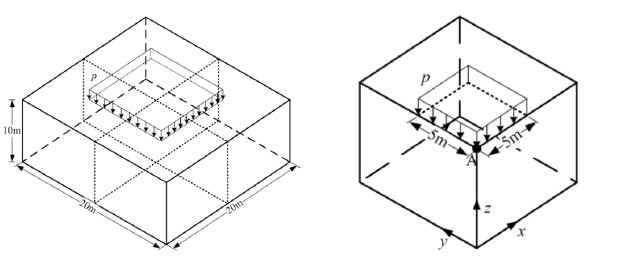Analysis of the springback phenomenon using finite element method
Author affiliations
DOI:
https://doi.org/10.15625/0866-7136/20588Keywords:
springback, finite element method, material nonlinearity, return-mapping, elasto-plasticAbstract
The springback phenomenon is a significant concern in manufacturing processes, particularly in metal component forming, as it directly affects dimensional control and the shape of formed parts. Accurate prediction and analysis of springback are crucial for achieving precise dimensional control and ensuring the desired final shape. Therefore, this study focuses on analyzing the springback phenomenon using finite element method. The primary objective is to develop a Matlab program for analyzing three-dimensional springback problems. Throughout the research process, the understanding of the phenomenon has been enhanced. The developed program has been successfully implemented to model and simulate the forming process, considering various aspects of the problem. The results of the solutions have been compared and evaluated, leading to important conclusions. The research also outlines future developments in this field. It is hoped that the results and understanding of this research will contribute to the field of computational mechanics and inspire further research.
Downloads
References
X. A. Yang and F. Ruan. A die design method for springback compensation based on displacement adjustment. International Journal of Mechanical Sciences, 53, (2011), pp. 399–406.
P.-A. Eggertsen and K. Mattiasson. On constitutive modeling for springback analysis. International Journal of Mechanical Sciences, 52, (2010), pp. 804–818.
M. Rashid and C. Liebert. Finite element analysis of a lifting portable offshore unit. PhD thesis, Chalmers University of Technology Goteborg, Sweden, (2015).
W. L. Xu, C. H. Ma, C. H. Li, and W. J. Feng. Sensitive factors in springback simulation for sheet metal forming. Journal of Materials Processing Technology, 151, (2004), pp. 217–222.
R. Wagoner and M. Li. Simulation of springback: Through-thickness integration. International Journal of Plasticity, 23, (2007), pp. 345–360.
D. M. Krahmer, R. Polvorosa, L. N. López de Lacalle, U. Alonso-Pinillos, G. Abate, and F. Riu. Alternatives for specimen manufacturing in tensile testing of steel plates. Experimental Techniques, 40, (2016), pp. 1555–1565.
N.-H. Kim. Introduction to nonlinear finite element analysis. Springer US, (2015).
W. Lai, T. Yu, T. Q. Bui, Z. Wang, J. L. Curiel-Sosa, R. Das, and S. Hirose. 3-D elasto-plastic large deformations: IGA simulation by Bézier extraction of NURBS. Advances in Engineering Software, 108, (2017), pp. 68–82.

Downloads
Published
How to Cite
License

This work is licensed under a Creative Commons Attribution-ShareAlike 4.0 International License.









